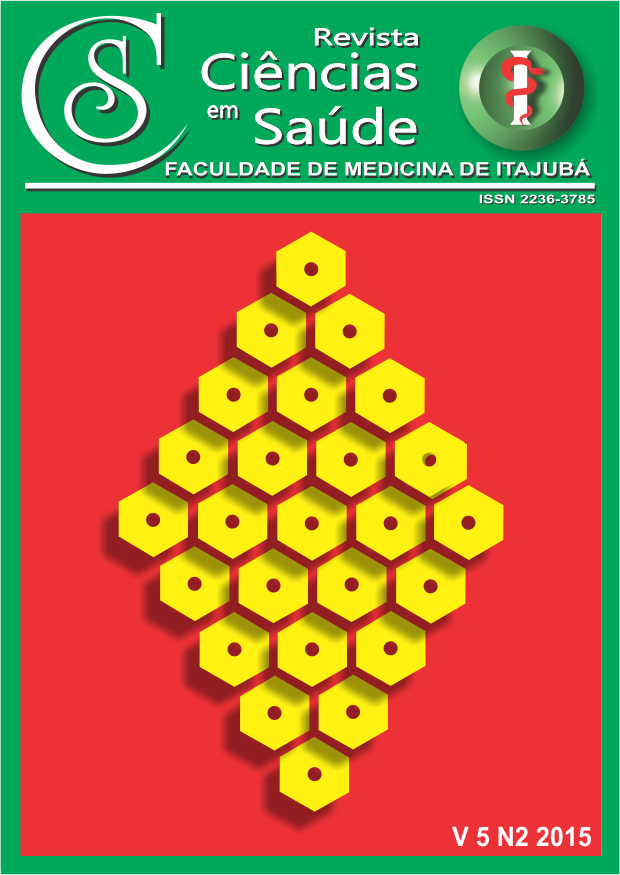Manejo Microbiológico dos Grânulos de Polímero Acrílico Usados na Prevenção da Dengue/Microbiological Management of Polymer Granule Acrylic Used in the Prevention of Dengue Fever
Main Article Content
Abstract
RESUMO
Objetivos: Efetuar o manejo microbiológico dos grânulos de polímero acrílico usados na prevenção da Dengue. Materiais e Métodos: Para a determinação da presença ou ausência de coliformes totais e fecais, e de E. coli, foram realizadas avaliações utilizando metodologia do kit Colitest®. Foram elaborados cinco recipientes com mudas de planta simulando as condições naturais de vasos de polímero acrílico. Utilizaram-se cinco diferentes grânulos de polímero acrílico adquiridos comercialmente. De tais recipientes foram colhidas sete amostras em dias sucessivos. A leitura foi feita com auxílio de uma lâmpada de ondas longas de 365nm, após realizou-se prova de Indol. Resultado: Em relação ao grupo amostragem, em 11,5% não houve crescimento bacteriano, em 17,2% houve presença de E.coli e em 71,3% coliformes totais, constatando altos índices de contaminação. Discussão: Não há na literatura científica trabalhos semelhantes, porém trabalhos analisando águas de outras fontes evidenciam que a água proveniente dos vasos dos grânulos tem maior potencial de contaminação. Conclusão: Os resultados obtidos permitiram identificar altas taxas de crescimento bacteriano, evidenciando grande risco de contaminação. As informações oferecidas nos rótulos não se encontram nos padrões estabelecidos pela ANVISA. O estudo é de grande importância por efetuar controle de qualidade microbiológico visando à segurança do consumidor em um produto usado na profilaxia do dengue.
Palavras chaves: Dengue, Prevenção & controle, Controle da Contaminação da Água.
ABSTRACT
Objectives: To make the microbiological management of acrylic polymer granule used in the prevention of Dengue fever. Materials and Methods: For the determination of the presence or absence of total and faecal coliform and E. coli, evaluations were performed with the use of the kit Colitest® methodology. Five vases were prepared to plant seedlings simulating the natural conditions of acrylic polymer vases. Five different acrylic polymer granule acquired commercially were used. In such containers seven samples were taken on successive days. The reading was done with the aid of a Long wave 365nm light bulb after which there was the proof of Indole. Results: Regarding the sample group, 11.5% had no bacterial growth, 17.2% showed the presence of E.coli and there was total coliform in 71.3%, finding high levels of contamination. Discussion: No similar studies were found in the literature, but studies analyzing water from other sources show that water from the vases of the granules has greater potencial contamination. Conclusion: The results have identified high rates of bacterial growth, showing great risk of contamination. The information provided on the labels are not the standards set by ANVISA. The study is of great importance for the making of microbiological quality control aiming at consumer safety in a product used in the prevention of the dengue fever.
Keywords: Dengue fever, prevention & control, Water Contamination Control.
Article Details
Authors maintain copyright and grant the HSJ the right to first publication. From 2024, the publications wiil be licensed under Attribution 4.0 International 
 , allowing their sharing, recognizing the authorship and initial publication in this journal.
, allowing their sharing, recognizing the authorship and initial publication in this journal.
Authors are authorized to assume additional contracts separately for the non-exclusive distribution of the version of the work published in this journal (e.g., publishing in an institutional repository or as a book chapter), with acknowledgment of authorship and initial publication in this journal.
Authors are encouraged to publish and distribute their work online (e.g., in institutional repositories or on their personal page) at any point after the editorial process.
Also, the AUTHOR is informed and consents that the HSJ can incorporate his article into existing or future scientific databases and indexers, under the conditions defined by the latter at all times, which will involve, at least, the possibility that the holders of these databases can perform the following actions on the article.
